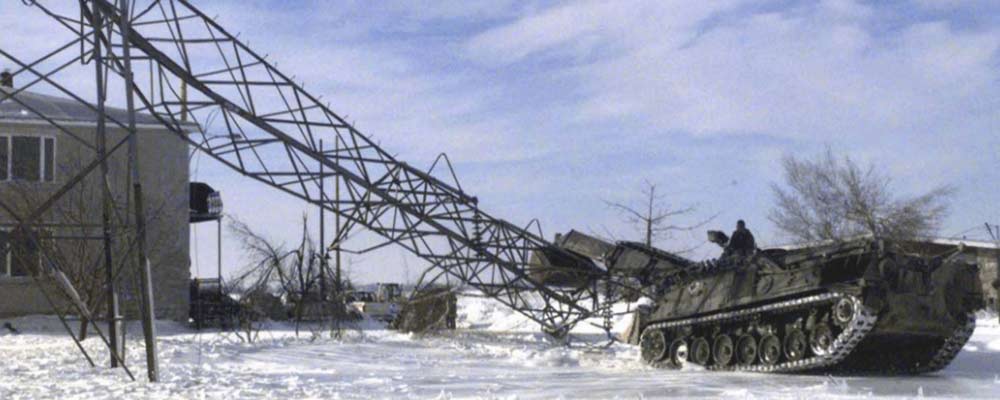Requests for help
On 7 January 1998, in the midst of the ice storm, the impacted provinces requested aid from the federal government. Responding to the requests from Ontario, Quebec and New Brunswick, the CAF launched Operation Recuperation the next day. The military helped municipal and provincial authorities in a wide array of recovery efforts. Working with local utility companies, they helped restore damaged electrical towers, and freed power lines that were trapped in centimetres of ice. They also helped their fellow Canadians in other ways, like clearing roads, downed trees and the debris around people’s homes. Canada’s military also provided shelter, food and medical care during the ice storm.

Members of the Canadian Forces reserve knock the heavy ice off of hydro lines in Kemptville, ON. These members were deployed as part of Operation RECUPERATION to aid victims of the January 1998 ice storm in Eastern Ontario and Western Quebec. Photo: Department of National Defence ISC98-015-24.



